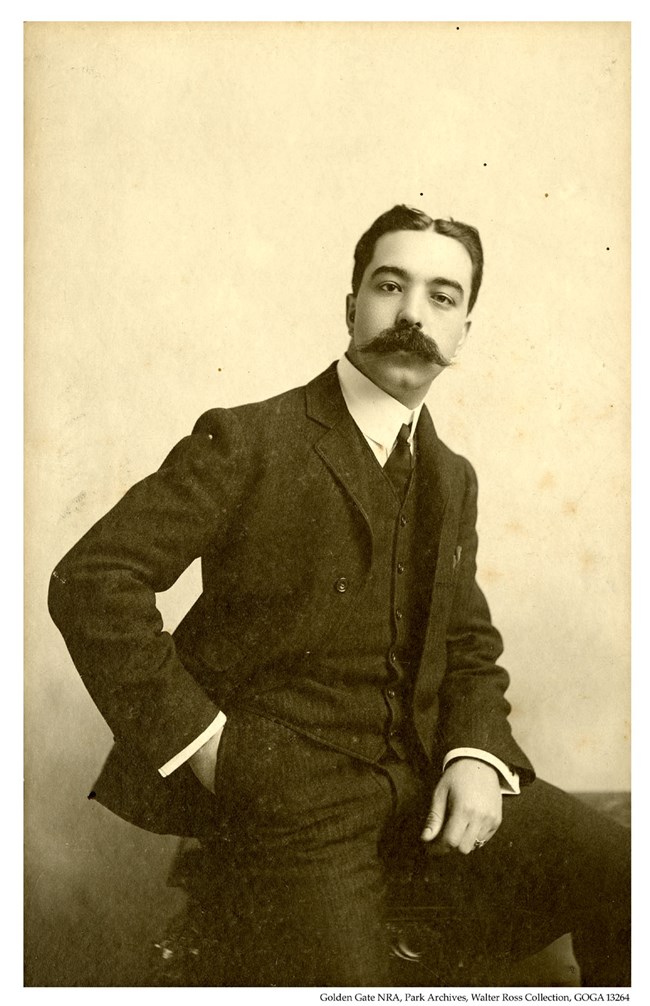
Golden Gate NRA, Park Archives, Walter Ross Collection, GOGA 13264 The Spanish American War was fought in the Philippine Islands and Cuba in 1898.The War was the result of a Cuban nationalist revolution seeking independence from Spain. Spain had considered Cuba a province for the previous four centuries. To suppress the revolt, the Spanish responded aggressively by constructing "re-concentration camps" into which they placed nearly all of Cuba's native population. This action caught the attention of the American press, American investors with economic interests in Cuba, and inevitably President William McKinley. Preferring to negotiate an end to the revolt peacefully, President McKinley sent Stewart L. Woodford to Madrid to discuss the possibility of Cuban independence with Spanish Prime Minister Praxedes Sagasta. Eleven days after Spain granted Cuban independence, the USS Maine, which had been sent to Havana by the U.S. to ensure the safety of American citizens and interests in Cuba, exploded in the harbor killing 266 sailors and arousing an American call for a swift response. While Congress deliberated about formally declaring war, the U.S. Navy instituted a naval blockade of Cuba. In response, Spain declared war against the United States on April 21, 1898, effectively embroiling the nation in its first international conflict. 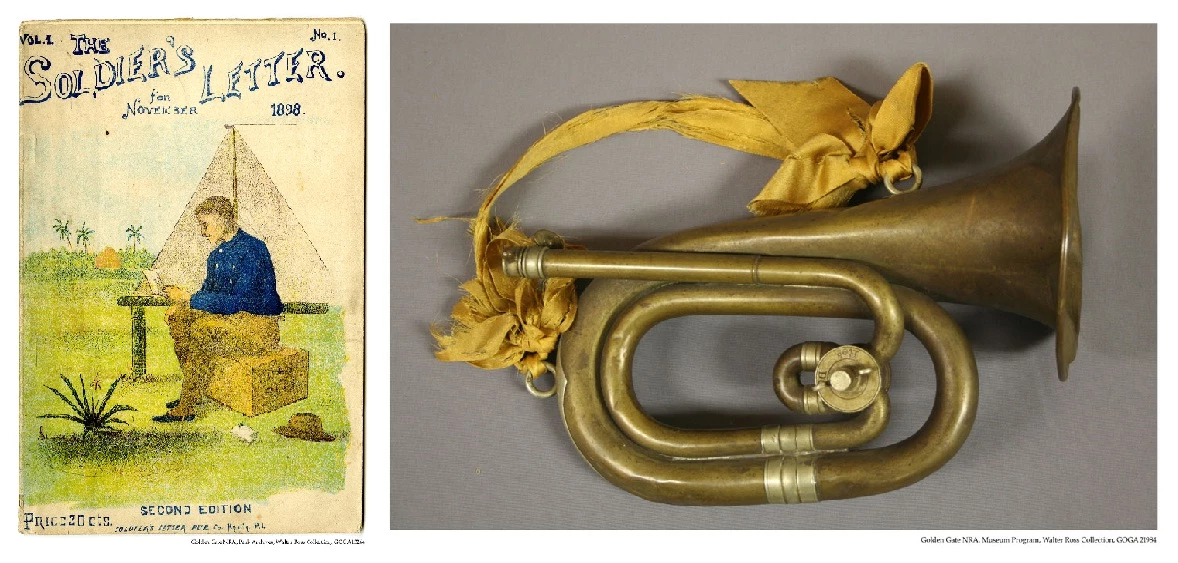
Golden Gate NRA, Park Archives, Walter Ross Collection, GOGA 13264 & GOGA 21984 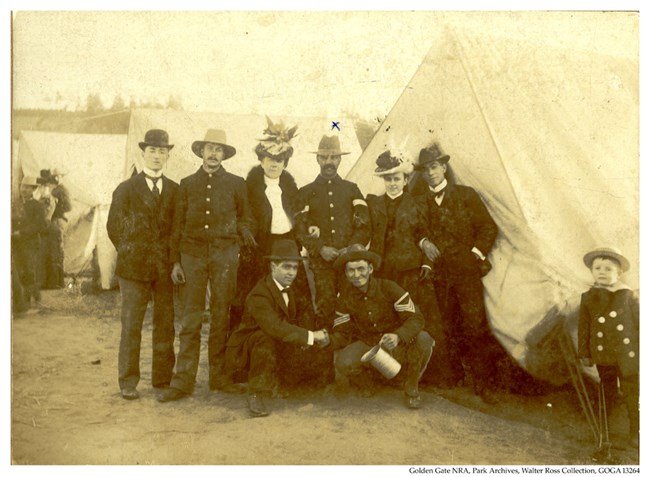
Golden Gate NRA, Park Archives, Walter Ross Collection, GOGA 13264 At the outbreak of the Spanish American War, the U.S. President issued a call for 125,000 troops. California responded with four regiments from its National Guard units: the First, the Sixth, and the Seventh California Volunteer Infantry Regiments, as well as the First Battalion of Heavy Artillery and an additional Signal detachment. Joseph N. Ross, who lived in San Francisco, enlisted as a Sergeant in Company C, 1st California Volunteer Infantry Regiment and was mustered into Federal Service on May 7, 1898 at the Presidio of San Francisco. 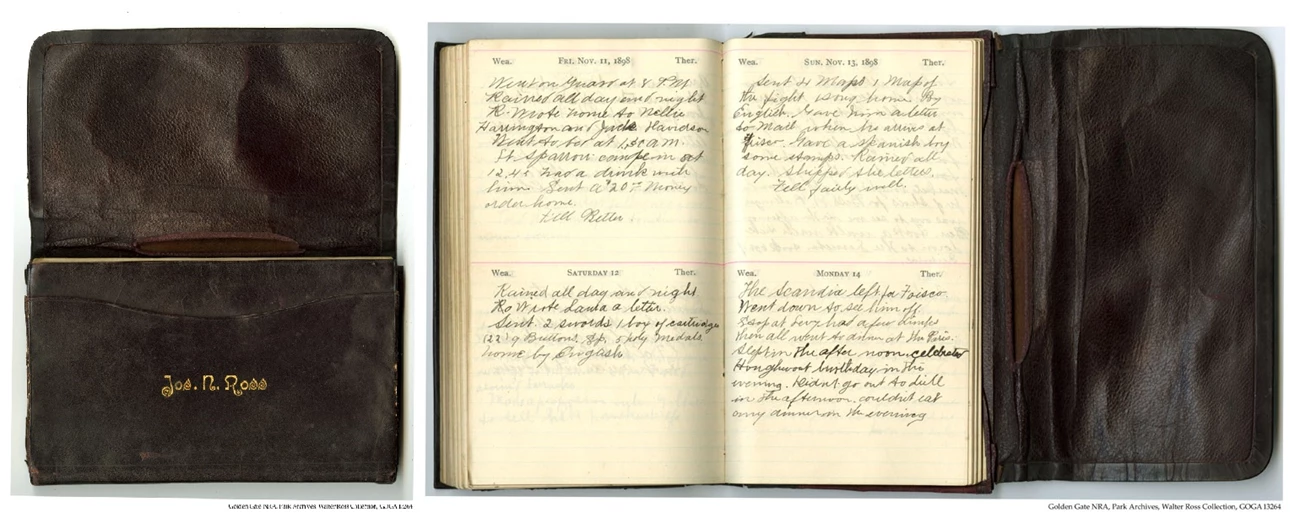
Golden Gate NRA, Park Archives, Walter Ross Collection, GOGA 13264 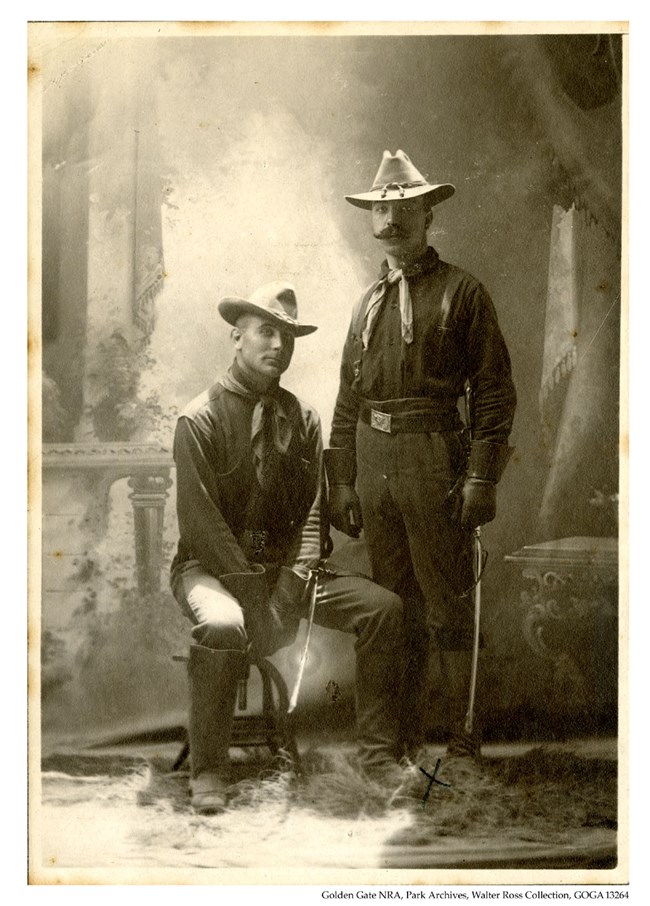
Golden Gate NRA, Park Archives, Walter Ross Collection, GOGA 13264 After training on post at the Presidio, Ross embarked for the Philippines aboard the troop transport City of Peking at the end of May 1898. While briefly stopping in Hawaii, his regiment was instructed to capture Guam. Accompanied by the USS Charleston, they positioned themselves in front of Fort Santa Cruz and fired a dozen shots. Soon, a boat filled with Spanish officers approached the cruiser and apologized for not returning the "salute," to which the 1st California Volunteer Infantry Regiment demanded their immediate surrender. The astonished officers were disarmed, the other regiments were disbanded, and the U.S. flag was raised over the fort. Fresh from this success, the unit was sent to the Philippines in preparation for the capture of Manila. Unfortunately, Ross was sick for most of the war, an experience he details in his diary. Although the Treaty of Paris transferred ownership of Spanish colonies to the U.S. after Spain's defeat in the Spanish American War in 1898, Filipino nationalists led by Emilio Aguinaldo continued to fight for total independence, supplanting the U.S. for Spain as their enemy. Ross' regiment participated in the beginning of the Philippine American War, which lasted from 1899 to 1902, before he returned to San Francisco in August of 1899 along with his brothers, all of whom were mustered out of service at the Presidio of San Francisco the following month. 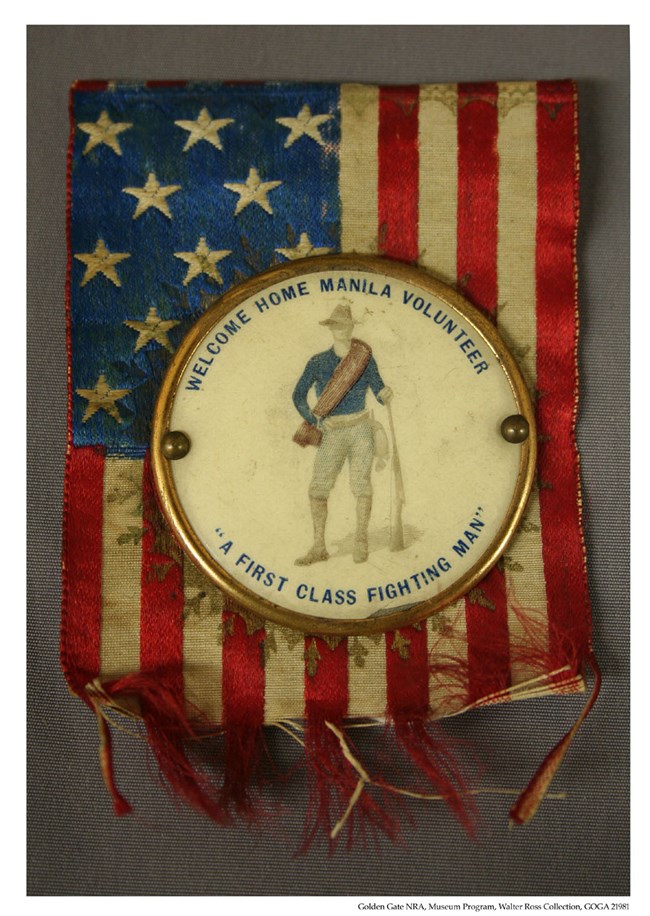
Golden Gate NRA, Museum Program, GOGA 21981 After the Philippine War, Ross' unit was mustered out of federal service and back into the California National Guard (C.N.G.), at which time Ross was assigned to the 1st Battalion, Coast Artillery (later known as the 250th Coast Artillery Regiment, C.N.G.). After San Francisco was ravaged by the 1906 earthquake and fire, Ross' battalion and the 1st Infantry Regiment were the only two California National Guard units to report to their armories of their own free will. On the morning of the disaster, these two units performed fire fighting duties, assisted in preserving order, and rendered aid to the homeless but they soon realized San Francisco would need reinforcements and a call for aid was sent to the National Guard of California at large. 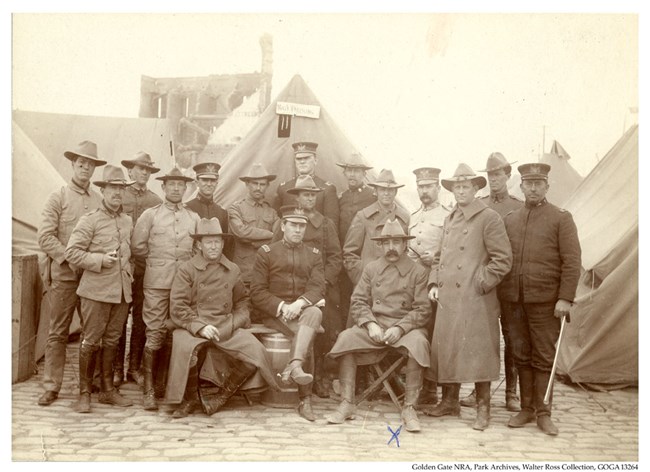
Golden Gate NRA, Park Archives, Walter Ross Collection, GOGA 13264 During relief efforts, Ross' battalion was commanded by Major Francis V. Keesling, a distinguished San Franciscan. Keesling graduated from Stanford University in 1898 and he practiced law in San Francisco, serving with the California National Guard from 1901 until 1909. After a failed bid for the governorship of California in 1914, he accepted an appointment to the Republican State Central Committee of California as chairman in 1915 and went to the Republican National Convention as a delegate in 1916. Active in civic organizations his whole life, he was the director of the Golden Gate Bridge and Highway District and instrumental in its construction as the chairman of the building committee from 1929 to 1937. Keesling and Captain Ross saw the California National Guard's relief effort to a close, and Captain Ross formally resigned from the California National Guard on April 30, 1907. The collection was donated to the Presidio Army Museum in 1975 and 1976 by Joseph's brother, Walter Ross. For more information: Spanish American War and the Philippine American War: 1906 San Francisco Earthquake and Fire: 1st California Volunteer Infantry Regiment: Major Francis V. Keesling: |
Last updated: February 28, 2015
